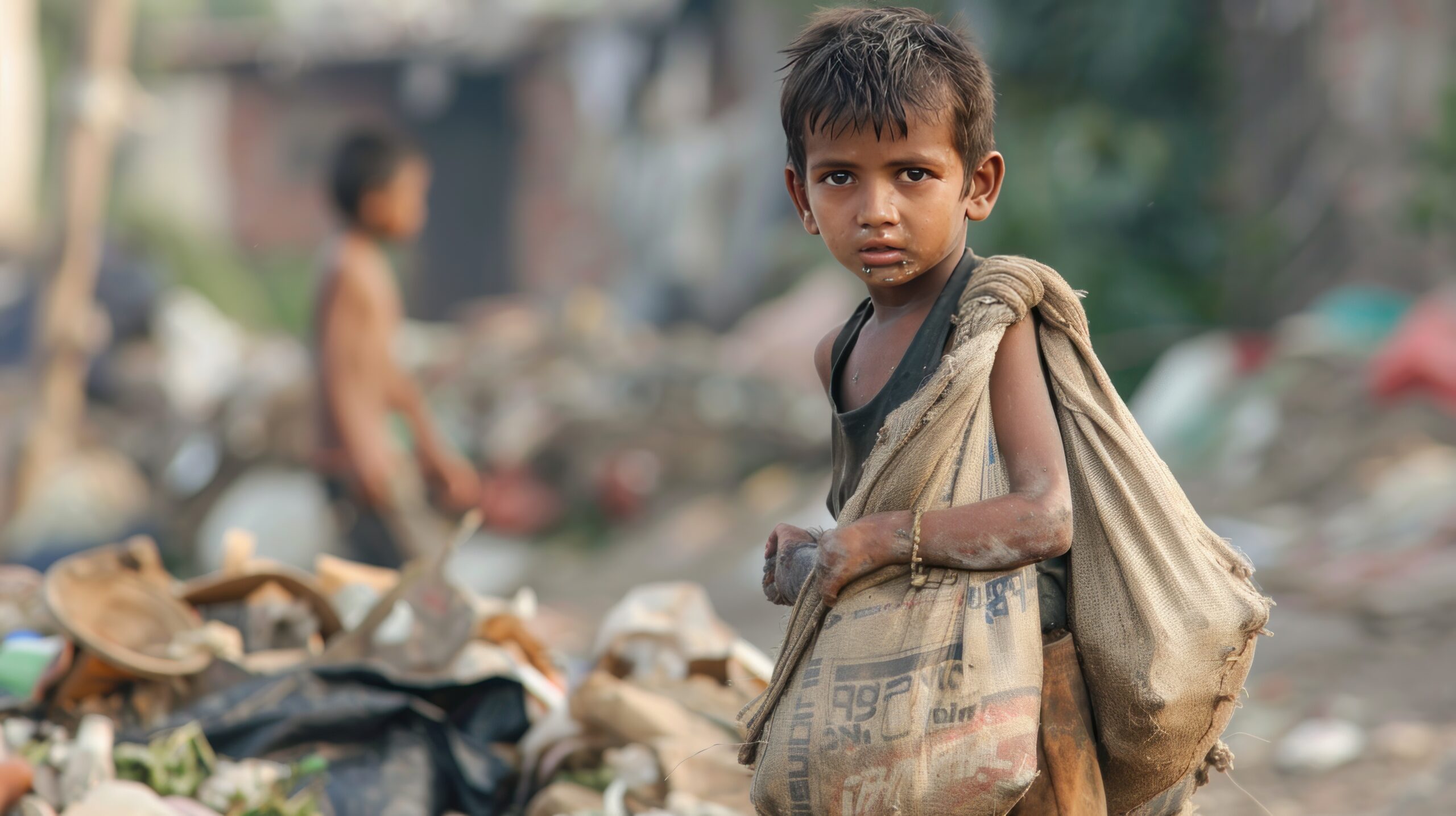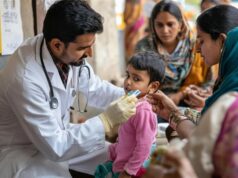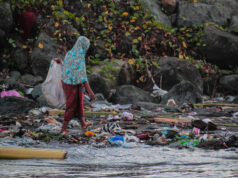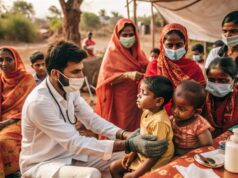Malnutrition does not usually dominate headlines like economic growth or technological breakthroughs, but its shadow is long. A child who is stunted or wasted is less likely to perform in school, earn a decent livelihood, or escape poverty1. While the Centre has ambitious missions like ICDS and POSHAN Abhiyaan, outcomes vary dramatically across states. Hence, why does a child in Kerala or Tamil Nadu grow up healthier than one in Bihar or Jharkhand? The answer lies in how India’s federal structure plays out, how states interpret and adapt central policies, and whether national schemes can learn from states that are showing what works.
The national picture
India has made progress, but the pace is sluggish. NFHS-5 (2019–21) shows stunting declined from 38.4% to 35.5% since 2015–16, underweight from 35.8% to 32.1%, and wasting from 21% to 19.3%. Yet severe wasting has inched up from 7.5% to 7.7%. These averages hide enormous regional disparities: central and eastern states continue to struggle with double the burden of southern states2.
The Union government has long relied on centrally-sponsored schemes. The Integrated Child Development Services (ICDS), launched in 1975, remains the backbone, offering supplementary nutrition, preschool education, and health referrals through Anganwadi centres3. More recently, POSHAN Abhiyaan (2018) has tried to bring convergence across ministries, digital monitoring, and time-bound targets to reduce stunting, underweight, and anaemia.4. Add to this the mid-day meal (now PM Poshan), health missions, the public distribution system, and Swachh Bharat, and India has no shortage of policy frameworks5.
But the challenge lies not in announcing schemes, it lies in how states translate them on the ground. Nutrition is as much about politics and governance as about food.
Kerala: Nutrition with Local Flavor
Kerala has long been celebrated for its social indicators, yet even here the fight against malnutrition is complicated. The state adopted a Nutrition Policy in 2015 that set concrete goals such as halving underweight and anaemia, reducing low birth weight, and tackling inequities. It innovated with the Poshaka Baalyam scheme, serving eggs and milk through Anganwadis, and overhauled menus to replace sugary or salty foods with more nutrient-dense, locally popular dishes6.
Kerala also invested in monitoring the “Kunjooz Card” tracks not just physical growth but also cognitive and emotional development. Local self-governments, empowered by a strong Panchayati Raj system, play a direct role in running Anganwadis and monitoring services7.
Despite these efforts, NFHS-5 reported a worrying rise in stunting (from 19.7% to 23.4%) and underweight (from 16.1% to 19.7%). The paradox is striking: strong healthcare, low infant mortality, yet persistent undernutrition. This suggests that structural issues like intergenerational malnutrition, changing diets, and urban poverty are still at play. Kerala’s lesson is that policy innovation matters, but nutrition requires constant vigilance and adaptation.
Tamil Nadu: A tradition of welfare
Tamil Nadu’s approach is built on decades of continuity. Its mid-day meal scheme, first rolled out in the 1980s, predates the national programme and remains a pillar of child nutrition. Unlike many states that treat central schemes as add-ons, Tamil Nadu has woven nutrition into its welfare fabric.
Under POSHAN Abhiyaan, the state has scaled up Nutrition Rehabilitation Centres, equipped Anganwadi workers with smartphones for growth monitoring, and ensured regular village health and nutrition days. Screening under the Rashtriya Bal Swasthya Karyakram (RBSK) in 2024-25 found that 14–15% of children under six were malnourished, yet this is far below the levels reported in high-burden states. Poshan Tracker data in mid-2025 showed wasting at just 3.5% and underweight at 6.3%, a fraction of what Bihar or Madhya Pradesh record8.
Tamil Nadu’s welfare politics ensures continuity in funding, while community structures like Village Health and Nutrition Committees anchor accountability. Even so, disparities exist: urban areas like Tiruppur city have reported higher malnutrition rates than surrounding villages, proving that no state can afford complacency.
If Kerala and Tamil Nadu illustrate the potential of state-led action, they also expose some cracks. Most nutrition schemes require cost-sharing, which richer states can handle but poorer states struggle with. The result is that the very regions with the worst malnutrition often have the weakest fiscal capacity to respond.
And then there is the problem of uniform design. A one-size-fits-all nutrition menu ignores the diversity of India’s food cultures. Kerala’s egg-and-milk model or Tamil Nadu’s hot meals cannot simply be replicated in, say, tribal Jharkhand or flood-prone Assam without local adaptation. Central mandates often lack that flexibility.
Despite differences in culture and capacity, several lessons from Kerala and Tamil Nadu are transferable. First, nutrition requires political priority. When chief ministers and state governments treat Anganwadis and mid-day meals as central to welfare, funding and oversight follow. Second, menus must be locally tailored and nutrient-dense, not just calorie-heavy. Third, data must drive action, whether through growth monitoring apps or child development cards, real-time tracking matters only if states act on it. And finally, community involvement is non-negotiable. Village committees, self-help groups, and Panchayats can make nutrition a lived concern rather than a bureaucratic scheme.
Childhood malnutrition is a public health priority. India’s central schemes provide the scaffolding, but it is the states that fill in the bricks. Kerala and Tamil Nadu show that when nutrition is treated as a political priority, when menus are locally adapted, and when communities are engaged, outcomes improve. But their stories also warn us: gains are fragile, and complacency is dangerous.
The road ahead demands a federal compact where the Centre respects state innovations and supports them with resources and technical expertise. If India can put cooperative federalism to work not just in economic or political matters but in the daily nutrition of its children, then perhaps the next generation will grow not just taller and healthier, but freer from the silent emergency that has held the country back for decades.
[1] https://www.who.int/news/item/19-11-2015-stunting-in-a-nutshell
[2] https://www.pib.gov.in/PressReleaseIframePage.aspx?PRID=1988614
[3] https://icds.gov.in/en/about-usa
[5] https://pmposhan.education.gov.in/
[6] https://shsrc.kerala.gov.in/index.php/women-and-child-development-department






